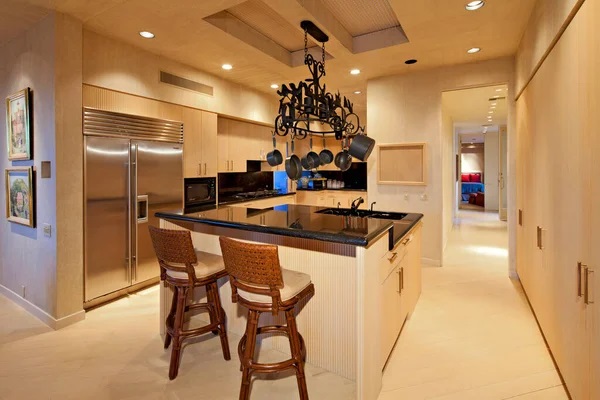Downlights are a type of lighting fixture that is installed into a hollow opening in the ceiling. They provide focused, downward illumination, creating a sleek and modern aesthetic. Downlights can be found in homes, offices, and commercial spaces.
Interior lighting significantly enhances the aesthetic appeal of a space, influences mood, and improves functionality. It highlights the architectural features and decor, contributes to the illusion of space, and promotes safety and visibility. Therefore, thoughtful planning of interior lighting is crucial.
The Role of Downlights in Interior Design
Presently Used Settings for Downlights
Downlights, commonly used in modern lighting designs, are often favoured for their sleek, unobtrusive appearance. Downlights are mainly adjustable, allowing you to direct light wherever needed. These settings in downlights typically include dimming capabilities, ensuring a versatile light output.
Impact of Downlights on Spaces
Downlights significantly impact the aesthetics and functionality of spaces. They offer a clean, modern look, and when properly placed, enhance visual comfort, highlight architectural details, and amplify the sense of space. Thus, playing a crucial role in interior design and lighting strategy.
Types of Downlights
Recessed Downlights
Recessed downlights, also known as can lights or pot lights, are installed into the ceiling, rendering a flush, sleek appearance that blends seamlessly with your home’s layout. They offer a subtle yet effective lighting solution, ideal for accent lighting or general illumination.
Adjustable Downlights
Adjustable downlights are a versatile choice in lighting design, allowing you to direct light where needed. They’re ideal for emphasizing artwork, and architectural details or creating specific lighting effects in residential or commercial spaces, offering flexibility and aesthetic appeal.
Surface Mounted Downlights
Surface-mounted Mounted Downlights are modern, space-efficient lighting solutions, perfect for interiors with concrete ceilings or where recessed lighting can’t be installed. They provide direct, adjustable illumination, enhancing ambience while ensuring energy efficiency and aesthetic simplicity.
How to Choose Downlights for Your Space
Determining the Appropriate Size of Downlights
The appropriate size of downlights is crucial to achieve the desired lighting effects in a room. Factors like room size, ceiling height, and purpose of lighting determine the downlight size. Always consider professional advice for optimal results.
Selecting the Colour and Intensity of Light
The selection of colour and light intensity significantly influences the ambience of a space. Various factors merit consideration when choosing what’s the intended mood, the overall decor theme, and the function of the room. This ensures a harmonious blend of aesthetics and functionality.
Understanding Beam Angles and Their Effects
Understanding beam angles is essential in lighting design as they determine the spread of light from its source. Different beam angles produce various effects, impacting illumination intensity, coverage area, and the overall ambience of the space.

Advantages of Using Downlights
Energy Efficiency
Energy efficiency refers to the efforts made to reduce the energy consumption of systems, devices, or processes. It’s applicable in various sectors such as transportation, buildings, and industrial processes. Energy efficiency contributes to environmental conservation and cost reduction.
Versatility and Flexibility
Versatility and flexibility are vital attributes, especially in today’s dynamic world. They signify the ability to adapt to varying situations, learn new skills, and handle diversity. Adopting these qualities can promote growth, success, and longevity in professional and personal life.
Aesthetic Appeal
Aesthetic appeal refers to the visual attractiveness or beauty of an object or concept. It plays a vital role in design, art, and marketing, as it has the power to engage, attract, and influence people’s perceptions and emotions.

